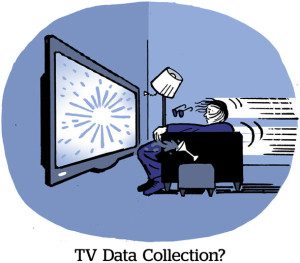Political advertisers are notoriously risk-averse, but candidates, campaigns and advocacy groups are ready to give up the myth of linear television as the default way to reach and persuade voters.
The 2022 election cycle is expected to see a record amount of political ad spend going to streaming, even compared to the 2020 presidential cycle, which is unprecedented for a midterm. Advertising analytics platform AdImpact projects streaming will account for nearly 15% of political ad spend this year.
For reference, broadcast TV could account for about half of all political spend, but industry execs say that gap is closing – and quickly.
Sticking with the old ways
CTV wouldn’t have the political clout it has today if not for the media’s roots in legacy television.
“Political advertisers live and die by TV – it’s their bread and butter,” said Grace Briscoe, SVP of client development at the DSP Basis Technologies.
But CTV is the hybrid model of linear scale and digital targeting, she added, and often with familiar broadcast companies in the media plan.
“Political advertisers are risk-averse and slow to hop onto new things,” Briscoe said. They tend to stick with the same media strategy as the previous cycle because that’s how they won in the first place.
Political advertisers are gunning for CTV not because they see it as a net new channel, but because it’s an effective digitization of something familiar.
Picking up where linear left off
Political and brand advertisers historically bought TV commercials against GRPs to reach the most potential voters in a certain demo within a designated market area (DMA).
CTV brings data-driven fine-tuning for campaigns that are sorely needed by political advertisers.
One big advantage is that DMAs are built for brands trying to reach a specific population center that doesn’t overlap with state political districts.
A West Virginia or Maryland state candidate deeply begrudges having to buy the top-dollar Washington, DC, DMA. An Iowa senator buys the Chicago DMA; in New Hampshire, you buy Boston. There’s a heavy waste component to political TV campaigns.
Briscoe said a key selling point for Basis in politics is its buying breakdown by state or district, rather than TV markets.
CTV is known for audience targeting, but it also has many efficiencies in geotargeting, which is the “lower hanging fruit” for political advertisers moving into CTV, said Jesse Contario, senior politics and advocacy sales director of MiQ’s southeast region.
Political CTV ad buys are also more informed by automatic content recognition (ACR) data.
“We have a real-time stream of TV viewership data for broadcast, cable and streaming that we use to analyze exposure to TV ads, which has been tremendously helpful for our political business,” Contario said.
For example, MiQ conducted research with AdImpact about political ad spend patterns across linear TV by compiling and comparing FEC files of broadcast commercials. Specifically, MiQ wanted to know how much spend against GRPs was driving unique exposures.
The study found that 90% of ad exposures hit the same 40% of viewers in the target electorate, which means they hit with a pretty high frequency.
Research also showed the cost of reaching a new household through linear TV was exponentially (as in, 10 times) more expensive during the third month of a political campaign compared with the first month.
Maintaining reach on linear TV throughout the election cycle is not efficient and extremely expensive, Contario said, because political advertisers up the ante on spend as the election gets closer. (What are you saving for, anyways?)
Personalized
Political advertisers are infatuated with CTV for the same reasons most other marketers are: more specific audience buys.
Political advertisers can buy audiences based on first-party voter file data to target a Republican or Democratic audience. Or advertisers can layer first-party voter affiliation on top of general age and gender demos for a more precise audience buy, Contario said.
In some cases, advertisers can take audience targeting to the next level beyond political affiliation.
TV programmers are quickly signing deals with first-party data aggregators to link voter affiliation info with lifestyle or behavioral data to create issue advocacy segments.
FuboTV, for one, partnered with three of these third-party data providers over the summer – i360, L2 and TargetSmart – to create political segments of Republican, moderate and Democratic audiences. The idea is to target or personalize content to viewers based on their likelihood to respond to certain hot-button issues, such as, say, climate change or gun control.
Ultimately, political advertisers are choosing CTV to reach new audiences, and to reach them effectively.
As of earlier in the year, Briscoe said Basis Technologies has seen 15 times the amount of political ad spend in CTV for 2022 compared with the 2020 election cycle.
While CTV growth overall is leveling out, it’s very much on the upward swing in attracting political ad dollars.















